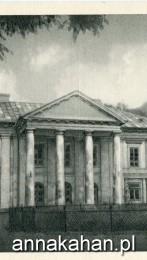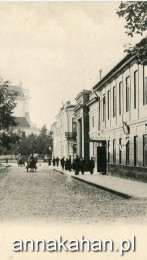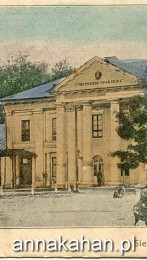[The Palace]
In Anna Kahan’s time, the palace served as a Russian governor’s house and the seat of the Siedlce Gubernatorial Government.
After the outbreak of the First World War, the Polish Healthcare Commission was founded in Warsaw in order to bring medical aid to the Poles conscripted into the Russian army. In Siedlce, pupils and graduates of secondary schools for girls such as Jadwiga Barszczewska School and Konstancja Zembrzuska School volunteered for the commission. The palace was converted into a hospital. Eugeniusz Wiszniewski was appointed both chief physician and director of the hospital.
Then, during the German occupation, the palace housed the headquarters of the German Military District of Siedlce with Major General Baron von Seidlitz und Leipe as the commander.
The building was also the seat of the German governor, General Max von Wallenberg who held this office until his death on February 1, 1917. He was buried at the Military Cemetery in Siedlce.
In the interwar, the palace was called the bishop’s palace as it served as the residence of the Bishop Henryk Przeździecki, the ordinary in the Diocese of Podlasie (Siedlce).
After the Second World War, the building housed, among others, the Register Office, the Podlaski Art School Complex, the Presidium of the National Council of the city, the Siedlce City Council. Nowadays, it is the seat of the Siedlce University of Natural Sciences and Humanities.
Leaving the park we head towards the church visible from afar, which is commonly, called the “old” church by the residents of Siedlce. When we get to Piłsudski Street, on our left, we see the remains of the former gate.






